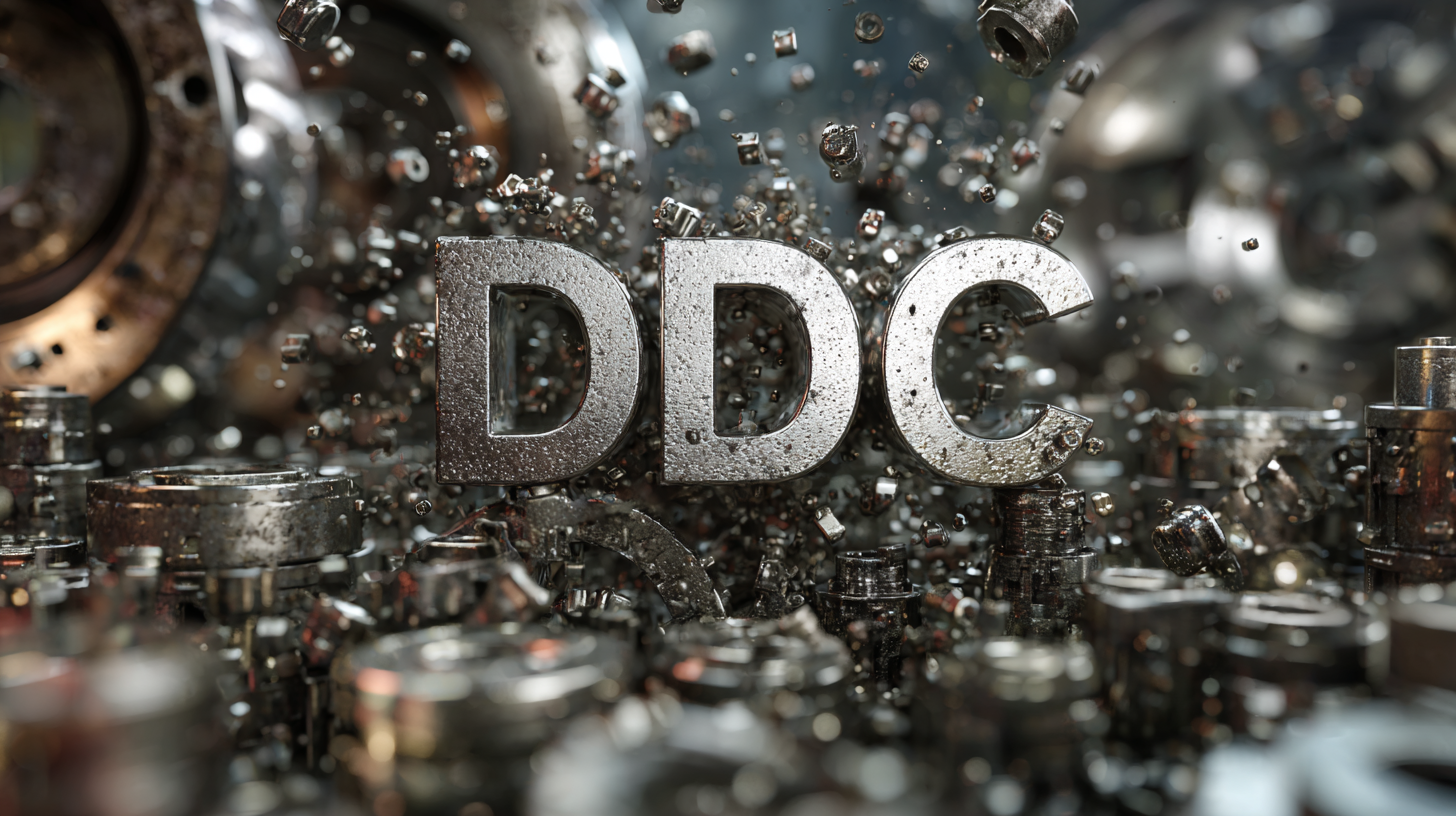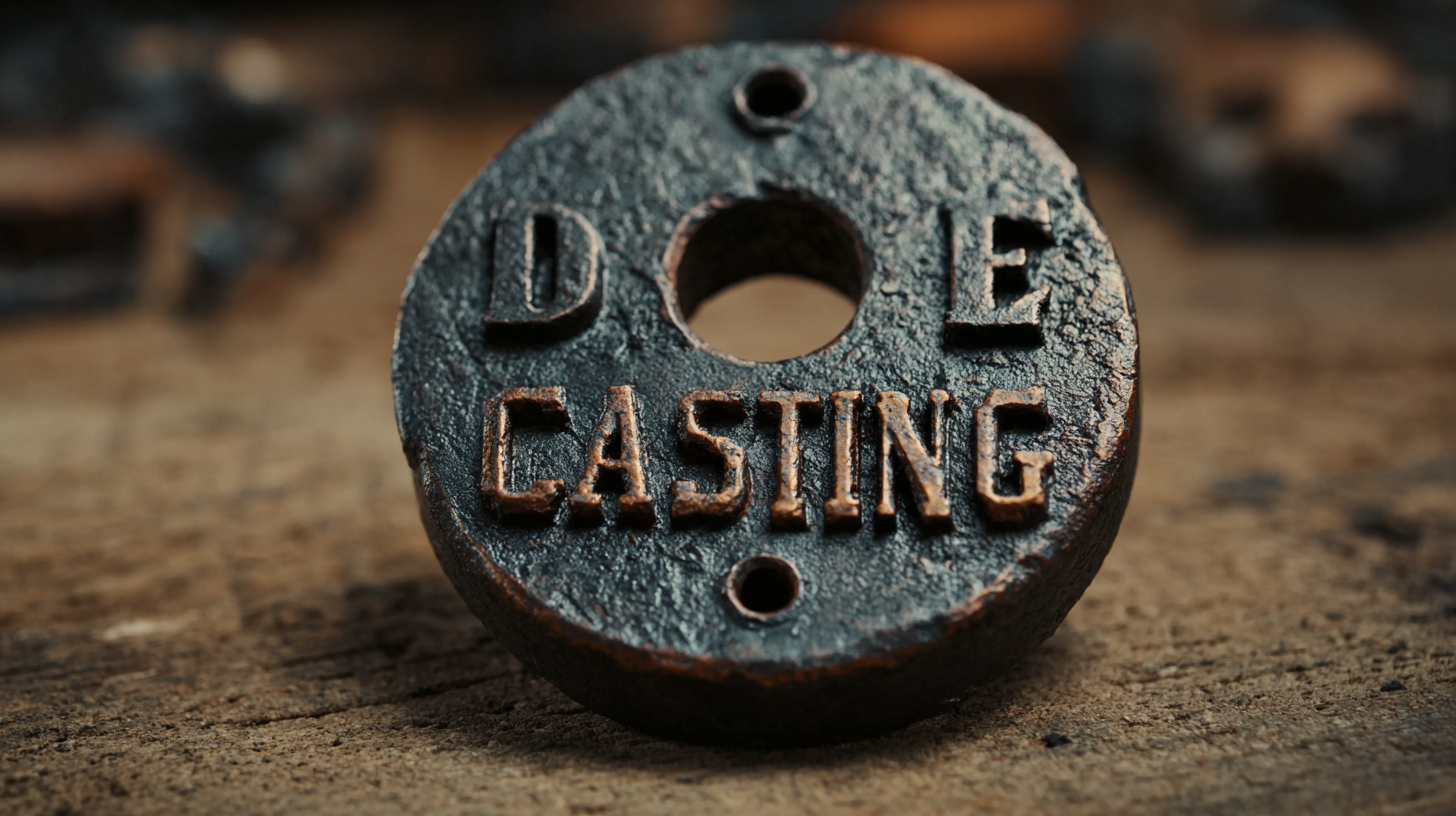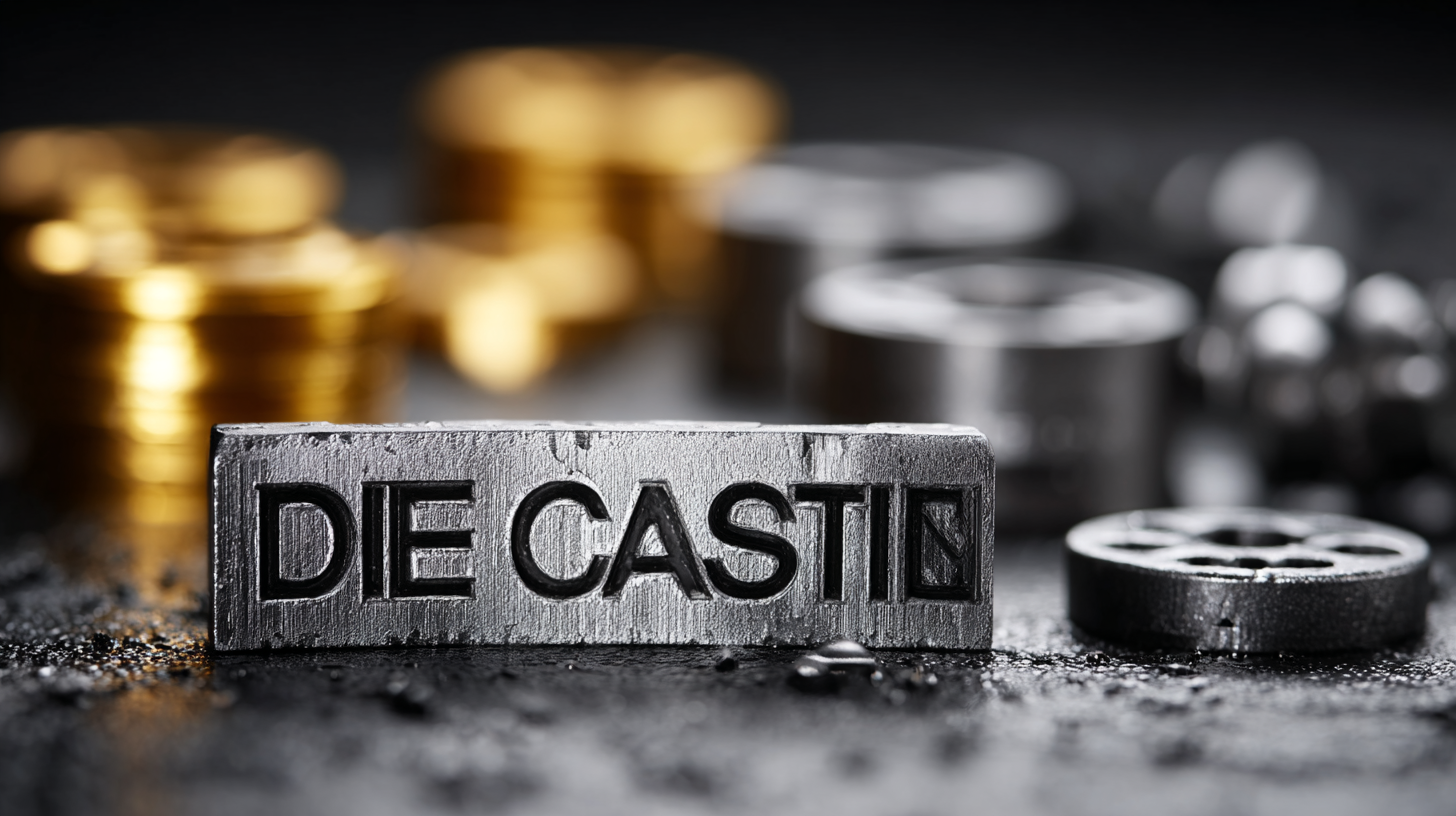
Understanding the Characteristics and Applications of Best Die Casting Products and How to Choose Them
The die casting industry has seen remarkable growth, driven by its ability to produce high-quality metal parts that meet rigorous demands across various sectors. According to a report by Grand View Research, the global die casting market was valued at approximately USD 66.96 billion in 2020 and is expected to expand at a compound annual growth rate (CAGR) of 6.8% from 2021 to 2028. This growth is catalyzed by the increasing demand for lightweight components in automotive, aerospace, and electronics industries.

Furthermore, China, as a leading manufacturer in this space, has aligned its production practices with international quality standards, earning global respect for its excellence. Understanding the characteristics and applications of the best die casting products not only enhances product quality but also informs better decision-making for industries seeking durable and efficient components.
In this blog, we will explore how to choose the right die casting products that can meet specific industry needs while highlighting the importance of quality in maintaining global competitiveness.
Identifying Key Characteristics of High-Quality Die Casting Products
When selecting high-quality die casting products, understanding their key characteristics is crucial. High-quality die casting should exhibit precise dimensional accuracy, often with tolerances as tight as ±0.1 mm. This level of precision is essential for ensuring that components fit together seamlessly, which is particularly important in industries like automotive where assembly efficiency is vital.
Moreover, the mechanical properties of the materials used in die casting directly impact performance. For instance, die cast aluminum typically boasts a tensile strength ranging from 70 to 250 MPa, which makes it ideal for lightweight structural components in aerospace and automotive applications. Reports from the Die Casting Association highlight that products made with alloy materials, such as ADC12, not only provide enhanced durability but also improve thermal and electrical conductivity, making them suitable for a variety of electronic applications.
Additionally, surface finish plays a significant role in defining the quality of die casting products. A smooth surface enhances corrosion resistance and aesthetic appeal, often achieved through proper mold design and temperature control during the casting process. Industry standards emphasize that a surface finish of Ra 1.6 to 3.2 microns is generally acceptable, helping to ensure both performance and longevity of the final product.
Essential Factors to Consider When Choosing a Die Casting Supplier
When selecting a die casting supplier, it’s crucial to consider several essential factors that can significantly impact your project’s success. The supplier's experience and expertise in die casting processes should top your list. Look for suppliers with a robust portfolio and a proven track record in your industry. This not only ensures that they understand the specific requirements of your projects but also that they can provide quality products consistently.
Another vital aspect is the technology and equipment the supplier utilizes. Modern die casting techniques, including high-pressure and low-pressure casting, can greatly influence the quality and precision of the final products. Make sure to evaluate the supplier's capabilities in this area. Consider asking for samples or prototypes to gauge their production quality before committing to a long-term partnership.
**Tips**: Always check customer reviews and testimonials to gauge satisfaction levels. Additionally, consider the supplier’s ability to meet deadlines and provide timely communication. Establishing a good working relationship based on trust and reliability will benefit your project in the long run.

Comparing Different Die Casting Materials and Their Applications
Die casting has become a crucial manufacturing process for producing complex shapes with high precision. When it comes to selecting the right die casting materials, the choice often depends on the specific application.
Aluminum alloys, such as AM60 and AA 2014, are prevalent due to their lightweight properties and excellent strength-to-weight ratios. AM60, for instance, is frequently used in automotive components, offering exceptional corrosion resistance while maintaining structural integrity. On the other hand, AA 2014 has gained attention in the aerospace sector for its superior mechanical properties, making it ideal for lightweight structural applications.
Recent advancements in die casting technologies, such as the utilization of graphene-reinforced materials, are paving the way for enhanced performance. The incorporation of graphene into aluminum matrix composites can significantly improve the mechanical characteristics and thermal conductivity, which are vital for high-performance applications. Furthermore, the exploration of phase change materials has shown promise for optimizing temperature control during the die casting process, potentially leading to better dimensional accuracy and reduced production defects. As the industry continues to evolve, understanding the unique properties of different die casting materials will be essential for engineers and manufacturers to make informed decisions tailored to specific application needs.
Steps to Evaluate the Capabilities of Potential Die Casting Vendors
When considering die casting vendors, it's essential to evaluate their capabilities systematically. Start by assessing their technological proficiency, particularly their use of advanced machinery and automation. According to a report by Grand View Research, the global die casting market was valued at approximately $16 billion in 2021 and is projected to grow at a compound annual growth rate (CAGR) of around 5.4% from 2022 to 2030. Vendors who leverage cutting-edge technology are more likely to deliver precision products that meet industry standards.

Next, investigate their production capacity and turnaround times. The ability of a vendor to scale operations quickly can significantly impact your project timelines. A study from Research and Markets highlights that the increased demand for lightweight and complex parts in industries like automotive and aerospace drives the need for efficient die casting processes. Engage potential vendors in discussions about their production capabilities, including their commitment to quality control and ability to accommodate custom orders. This not only ensures they can meet your immediate needs but also supports long-term project development.
Common Mistakes to Avoid When Sourcing Die Casting Products
When sourcing die casting products, avoiding common pitfalls can significantly enhance your purchasing experience. One prevalent mistake is underestimating the importance of supplier qualifications. According to a report by the North American Die Casting Association, sourcing from certified suppliers can reduce defects by up to 30%. Always verify the credentials and experience of your potential suppliers to ensure they meet industry standards.
Another frequent error is neglecting the specifics of the die casting process itself. Many buyers fail to consider the material properties and the projected lifespan of the products. A study from the International Journal of Advanced Manufacturing Technology highlights that the choice of material can affect both durability and functionality, influencing product performance in real-world applications.
Tips: Always request samples before making bulk purchases. This allows you to assess quality firsthand. Additionally, maintain clear communication with suppliers regarding your product specifications to prevent misunderstandings. Keep in mind that detailed specifications provide the foundation for a successful partnership and high-quality output.
